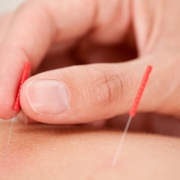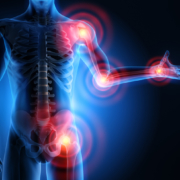Graston Technique for Hamstring Injury Recovery
Hamstring injuries are one of the most common injuries encountered by athletes and people who are physically active. These injuries can be caused by sudden acceleration motions, deceleration, or structural and functional imbalances within the body’s musculoskeletal system. While there is no one magical solution that works for every individual with a hamstring injury, using Graston technique can offer benefits that can speed up the injury healing process.
What is Graston Technique
Graston technique is a soft tissue mobilization therapy that uses advanced instruments to break down fibrous adhesions that are formed in the body due to injury or overuse. The technique applies controlled pressure to the targeted soft tissue using specially designed tools.
How It Helps:
1. Pain relief:
One of the biggest benefits of Graston technique is the immediate reduction of pain. The technique employs a deep tissue massage technique that helps clients reduce muscle tension while breaking up fibrous adhesions that cause pain and discomfort in the tissue.
2. Improved Range of Motion:
Hamstring injuries can lead to decreased flexibility and range of motion of the muscles. Graston technique can enhance flexibility while breaking down adhesions. It can help loosen tissue, promotes ease of movement, and makes it easier to engage in physical activity.
3. Accelerates the Recovery Process:
This soft tissue technique can speed up healing and recovery rates from the hamstring injury. The instruments used in the therapy help identify soft tissue limitations that hinder recovery and effectively break them down with advanced technology. Soft tissue regeneration is effectively speeded up with this therapy, accelerating the overall recovery process.
4. Reduces Scarring:
This soft tissue technique helps to reduce the development of scar tissue at the site of injury. Fibrous tissue buildup typically overcompensates following an injury and restricts mobility. Graston technique breaks down and stretches the tissue while improving an individual’s overall mobility.
5. Fewer Complications:
Patients that undergo Graston technique are less likely to develop complications after the injury and are less likely to re-injure themselves. The technique helps improve the body’s overall function by allowing the muscle to function correctly while reducing the scar tissue that impairs its movement.
This soft tissue technique is an effective therapy method for people with hamstring injuries. It not only provides relief from symptoms like pain and discomfort but also helps to accelerate recovery and improve the range of motion. Graston technique helps break down adhesions in soft tissue and produces long-lasting results.
Once treatment has been completed, athletes and individuals return to physical activity. They experience improved overall physical function. If you are suffering from a hamstring injury, seeking graston technique therapy through a licensed therapist will provide significant benefits. Call today @ 780-455-2112. Check out our office @ ocwc.ca.









